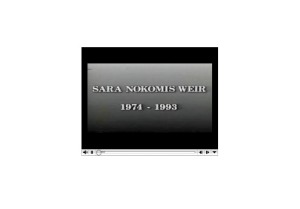I don’t know if I have mentioned it before, but a contract can’t conceivably have all of the possible terms available in the universe (although some try). So if a term is missing from a contract, or if it is ambiguous, the court will try to fill in the blanks. In other words, the court will interpret any part of your contract that is unclear. For that reason, you should be clear about the important parts- like usage.
In my research, I came upon a case which is a good example of how clear usage terms can make all the difference in a lawsuit. The case is Steve Altman Photography v. United States, 18 Cl. Ct. 267 (Cl. Ct. 1989)
Basically what happened was that the photographer and his client, a government agency, had an ongoing relationship and a subsequent dispute over a couple of different uses. Two parts of the case interested me. The photographer claimed that the agency violated his copyright twice, once by releasing an image to a magazine and again by using a (separate) photo in an annual report. Both allegations combine to make a good lesson.
“PR Use” and Release to a Magazine

I simply hate pages with lots of text and no photos. So here. Enjoy. © 2008 Alicia Wagner Calzada
For the first allegation, the photographer had granted “public relations use” for an assignment. The agency gave a copy of a photo from the assignment to a magazine. Was the copyright violated?
First, the court, without more specific indications of the intentions of the parties (at the time of the contract), interpreted “public relations” based on the dictionary definition:
“”Public relations” refers to the “business of inducing the public to have understanding for and goodwill toward an . . . . institution.” Webster’s New Collegiate Dictionary, 932 (1975).” Id.
Second, because the photographer came up with the terms, the court construed the contract most favorably to the other party- basically, as the person drafting the terms, you have a responsibility to be clear, and you don’t get to benefit from being vague. Thus the court found that releasing the photos to the magazine fell under “public relations” use.
More Specific Usage Terms– “1982 annual report”
In the same case the same photographer had also licensed some photos for an annual report, specifically “to be used in 1982 annual report and for P.R. release.”
Because these terms were more specific, when the agency use the images in the annual report for a different year (1983), the court ruled that there was a copyright infringement.
So you see how being specific made all of the difference. Imagine if the client had used one of the photos from the first instance in an annual report. The court could have used the second contract as proof that annual report use was not included in public relations use. Or it could have decided that the absence of a specific limitation meant that there was no limitation.
Moral of the story, be specific, lest someone else is left to read your mind. After all, if you end up having a judge interpret your contract, you have lost the client.
If you use a general license, list the possible uses. If you need help filling in the blanks, a great resource is PLUS (Picture Licensing Universal System). They have an awesome feature called the “License Generator” which you can use to fill in the usage section of your contract. Try It!
Happy Shooting.
-A

Comments